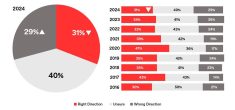Reuters / The U.S. drought of 2012, the worst since the dust bowl years of the 1930s, sent world food prices to record highs. The long, dry summer cost the government a record $16 billion in crop insurance payments. The Mississippi River shrank in the heat, and barge traffic slowed to a trickle.
And U.S. weather forecasters never saw it coming.
That’s why this year, as spring planting begins, meteorologists are adjusting forecasting techniques, trying to learn from what went wrong last summer and using 2012 weather data for what they hope will be an improved early alert system.
Read Also

June brings drought relief to western Prairies
Farmers on the Canadian Prairies saw more rain in June than they did earlier in the 2025 growing season
“The drought of 2012 was such a singularity, only repeated a few times in a century,” said Harvey Freese, a top private weather forecaster. “The temperature and precipitation departures were two standard deviations from normal. The year 1934 did begin to show up in our analog comparisons of past years, but we probably only dared to think about the possibility.”
Both forecasters and their customers say improvement is needed over what happened during the first half of 2012.
“People are calling it a ‘flash drought’ because it developed so suddenly,” Siegfried Schubert, a senior research scientist for NASA said, recalling the dry season that started last winter, persisted through the spring and summer, and now continues in the western Corn Belt and southern U.S. Plains. “I don’t think there were any models that predicted that.”
Well-established agricultural forecasting services like MDA EarthSat Weather, Commodity Weather Group, World Weather, Freese-Notis and others were caught by surprise. Commodity traders and grain analysts pay richly for forecasts that can be reliable as far as three months in advance, but none of the firms gave advance notice of last year’s drought during the winter or early spring.
Meteorologists rely on esoteric weather conditions to forecast long-term U.S. weather trends, such as the La Niña and El Niño phenomena tied to changes in southern Pacific Ocean sea surface temperatures. A year ago, weather forecasters said the second-strongest La Niña in history faded in the winter of 2012 when sea surface temperatures began to warm.
Ignored data
Meteorologists took that as a sign that the U.S. Crop Belt should experience a fairly normal growing season. But they ignored atmospheric data that might have tipped them to the impending drought.
“Even though the oceans were acting like they were not in La Niña anymore, the atmosphere was acting like we were,” said Joel Widenor, agricultural director for Commodity Weather Group. “Unfortunately, we didn’t pay attention to that soon enough to adjust our forecast last spring. It’s something we’re watching this year. We think it was a pretty big factor last year.”
Widenor calls it the “GLAAM” factor. He has tweaked his forecasting techniques for this season using the global atmospheric angular momentum (GLAAM), an atmospheric index that measures the spinning of the Earth and its effect on weather.
Hoping to catch signs of a drought earlier, he also is watching the weekly U.S. Drought Monitor, which tracks soil moisture, as well as water temperatures in the north Pacific Ocean, off the coast of Baja, California, and the northwest Atlantic Ocean.
EarthSat’s senior meteorologist Don Keeney said his firm is studying previous big drought years and comparing them with current patterns, looking for any sign that drought-prone conditions will continue.
Betting on weather or climate?
But meteorologists as well as climatologists who study climate — the interaction of the sun, the atmosphere and the earth — readily admit 2013 will be another tricky year to predict. La Niña and El Niño patterns this winter have been “neutral.”
It boils down to educated guesswork, forecasters say. Or hunches based on years of experience. Iowa State University climatologist Elwynn Taylor in March 2012 looked at the La Niña trends and updated his prediction for a major drought to a 50-50 probability from 30-50.
This year, Taylor says, the western Midwest is set up for another hot, dry summer, citing La Niña history. He says rock-hard soils several feet below the surface are another flag the droughty conditions could continue this season.
Taylor’s outlook aligns with recent comments from Nebraska state climatologist Al Dutcher, who says the cornhusker state’s 10-million-acre corn crop stands or falls on irrigation as well as rain.
In fact, most weather-forecasting models, including the U.S. government’s, are now leaning toward a hot, dry summer for the U.S. Crop Belt, especially west of the Mississippi River.
But last year’s failures have left grain market analysts worrying about this year’s forecasts. And they need to balance the longer trends with the way a sudden shower can affect markets day to day.
“We all know that the long-term guidance is not as reliable as near-term patterns,” said Rich Feltes, an analyst at giant broker RJ O’Brien. “We also know nothing is more rivetting to the markets than what the last 24 hours’ precipitation and temperatures have been relative to expectations.”
While calculators to crunch data on long-term patterns are important, analysts say, day to day they must always give greater weight to short-term weather forecasts. Why? Because most commodity traders think short term, not long term. Volatile grain market moves reflect that reality.
“Weather forecasts 12 to 15 days out are not terribly reliable. The forecaster we use points that out constantly,” said Anne Frick, oilseed analyst at Jefferies Bache in New York. “For three days out, very high confidence. Up to seven days: confidence. Beyond the seven- to 10-day period, it gets quite iffy.”


















